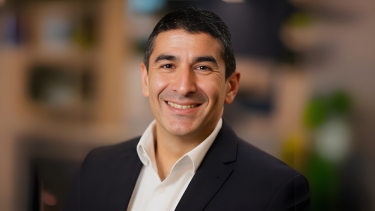This industry transformation requires time, particularly as we integrate diverse systems across the healthcare ecosystem. However, each step towards connecting these components and fostering intelligent collaboration also strengthens our ability to capture, maintain, and leverage high-quality data, ultimately advancing healthcare delivery for all Australians.
However, the journey towards fully connected care presents significant challenges. We must navigate legacy systems, complex compliance frameworks, and find a balance between enabling data accessibility while also ensuring robust security measures. Success will demand innovative solutions implemented with precision and forethought.
Understanding the Challenge
The path to connected care begins with identifying the gaps requiring our attention. Healthcare data currently resides in technological and organisational silos that impede true interoperability. While healthcare providers often allocate resources for system implementations and upgrades, many overlook interoperability and integration requirements during initial planning stages. To drive meaningful improvement, we must prioritise system interoperability and data integration from the outset, rather than treating them as secondary considerations.
Equally crucial is maintaining the delicate balance between robust data security and accessibility. As Australian Government policies and regulations evolve, organisations must ensure compliance whilst preserving data availability for authorised users.
Furthermore, successful digital transformation hinges on stakeholder engagement, particularly from clinicians and patients. While some will embrace digital systems readily, others will require comprehensive support and training to transition effectively from legacy technology and paper-based processes.
Enhancing Connected Care Through Compliance and Interoperability
The ongoing debate in Australia regarding the new My Health Records amendment bill, which proposes to ‘Share [Health Information] by Default,’ has sparked significant interest among healthcare professionals and technology leaders. As the bill moves closer to becoming law, understanding the benefits of connected care and leveraging strategies to achieve compliance has never been more relevant. Essentially, connected care is about ensuring that all available information about a patient can flow seamlessly through different care settings and be accessible to different healthcare providers in real time.
To achieve this ambition, a strategic approach to modernising healthcare platforms and enabling greater interoperability through the adoption of a standard like FHIR (Fast Healthcare Interoperability Resources) is essential. By ensuring solutions are aligned to a standard for exchange, data can be seamlessly and securely shared across different healthcare settings and jurisdictions. This FHIR-based interoperability layer allows clinicians to access a patient's complete health history, regardless of where the data is stored, ultimately improving the quality and continuity of patient care. This approach not only enhances patient outcomes but also supports healthcare providers in delivering more efficient and effective care.
Telstra Health's collaboration with Smile Digital Health exemplifies our commitment to accelerating interoperability and ensuring secure information exchange across care teams. Smile Digital Health's Clinical Data Repository facilitates data harmonisation, integration, and real-time information sharing. Their innovative approach leverages FHIR® (Fast Healthcare Interoperability Resources) and Clinical Quality Language (CQL) technology to enable seamless data aggregation, care gap analysis, and clinical data analytics. These insights are accessible across various care settings and reflected in Electronic Medical Records (EMRs) throughout the ecosystem.
This partnership enables Telstra Health to bridge legacy systems whilst delivering the modern, intuitive experience that today's healthcare consumers expect. The Smile platform integrates with existing infrastructure, providing contemporary functionality through an intelligent API (application programming interface).
During our recent Talking HealthTech podcast, Angie Bass, Executive Vice President and Chief Strategy Officer at Velatura Public Benefit Corporation, highlighted how consumer expectations and AI will shape healthcare's future with fluid health data mobility enhancing patient care delivery.
James Agnew, Chief Technology Officer at Smile Digital Health, emphasised that innovations in signal processing and structured data availability are unlocking new possibilities. Standards such as HL7® FHIR, SNOMED, and LOINC, combined with API and data democratisation, will prove fundamental to advancing connected care in Australia.
The Smile Clinical Data Repository exemplifies how we can modernise legacy systems and create a unified API landscape. These systems—encompassing FHIR® facade, clinical data repositories, and platform modernisation—are essential for achieving interoperability and real-time analytics. By adopting a strategic rather than purely technical approach, we can address the multifaceted challenges of modern healthcare delivery.
Where Will This Lead Us in the Future?
The future of connected care holds the promise of a more efficient, effective, and patient-centric healthcare system. While this future is within our grasp, achieving it also demands sustained commitment, strategic planning, and collaborative innovation.
High-quality data and interoperable systems are fundamental to bridging healthcare gaps, driving innovation, and fostering technological advancement. We're currently exploring how AI and IoT devices can collaborate to generate comprehensive population health data that offers deeper insights into community health and wellbeing. This will enhance our ability to anticipate future healthcare needs, resource requirements, and treatment strategies.
When integrated into a connected healthcare ecosystem—where patient information flows seamlessly across care settings—this vision will not only improve patient outcomes but also elevate care standards to meet contemporary consumer expectations.
The ongoing development of research initiatives supporting these objectives continues to inspire us, and we remain committed to investing in transformative solutions. Initiatives such as the Sparked FHIR® Accelerator and My Health Record modernisation in Australia are advancing data and technology standardisation to enable personalised and precision medicine, contributing to the broader health ICT ecosystem.
While achieving truly connected care presents complex challenges, our focused commitment to interoperability through adoption of standards and comprehensive stakeholder support will help create a healthcare system that is more efficient, accessible, and genuinely patient-centered.
About the Author: Farhoud Salimi joined Telstra Health as Chief Technology Officer in April 2023, previously serving as Executive Director, Service Delivery (CTO) at eHealth NSW. He has over 20 years of experience across private and public sectors and is recognised for his exceptional leadership and technical expertise and is a regularcontributor at ICT industry forums.








































